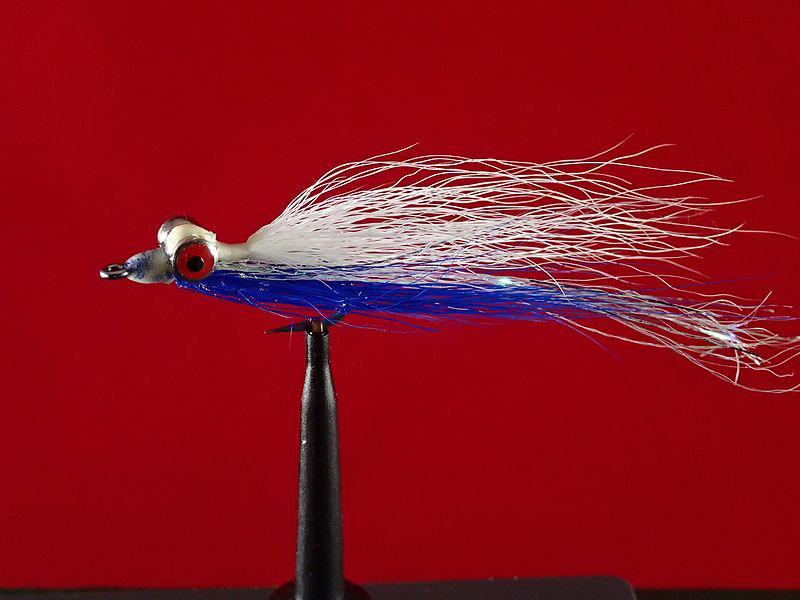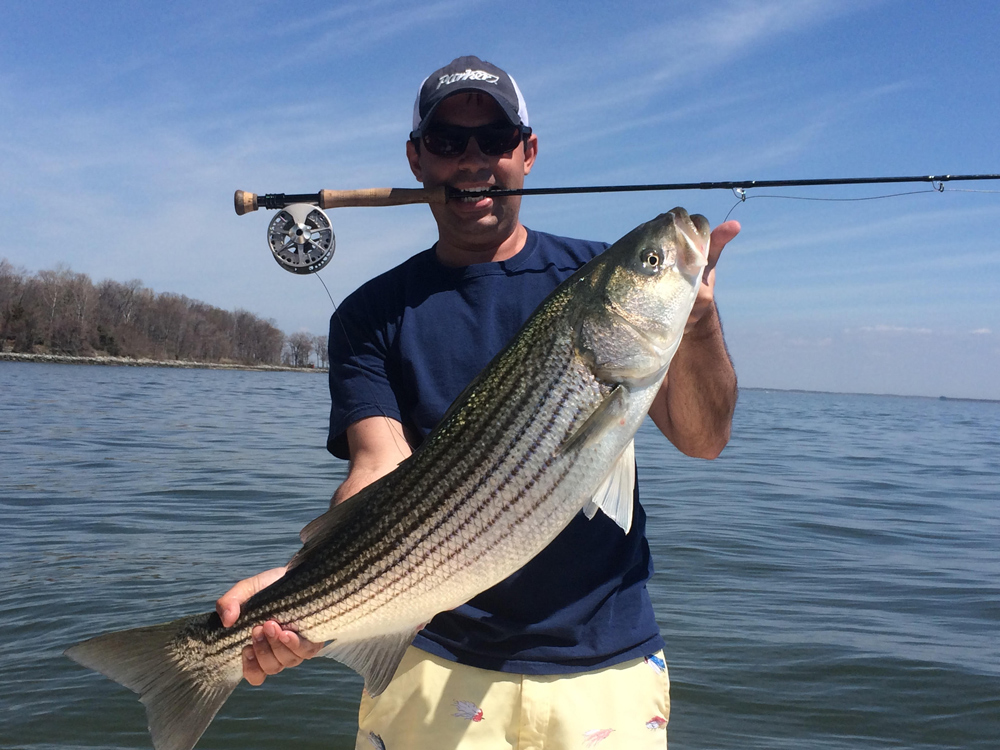Chesapeake Bay fishing offers many options, and the summer months may be the best time for fly fishing on the Bay since the fish tend to be high in the water column. It’s certainly possible to catch fish in deeper water when they’re suspended, but finding those blitzing fish is the most fun. And even when you can't find 'em up top, during the summer months stripers can often be caught in the shallows - as you can see in this short video.
Chesapeake Fly Fishing Gear
Seven- or eight-weight fly rods with full sink lines are ideal. In the spring or if the fish are very deep in the summer and you need a heavier line just to get down to them, move to a nine weight. Personally, I like a fast rod for throwing sinking lines, because they have a habit of overloading slower rods; the faster rod helps with the tailing loops that are so common in full sink lines. Plus, fishing sinking lines is almost always blind casting, and distance is important when blind casting simply because a long cast covers more water. It also allows the line to sink faster and deeper, especially in the current or wind. An angler can always feather out more line to let the fly sink without any tension on it to gain maximum depth.
Fly Fishing leaders
When it comes to leaders I’m adamant about using 100 percent fluorocarbon. Regular mono has less abrasion resistance and less sheer strength. Meanwhile, flouro is also a little stiffer and turns over a heavy or large fly a little better than mono does. And on top of that, if a fish is hooked deeply or has teeth, as in the case of bluefish, the fluoro is less likely to be chewed through. What about length? Even though a nine-foot leader is probably not necessary it’s still good to go that route. Those blues will cause a few bite-offs no matter what you’re using, and after retying a few times there will still be plenty of leader left, necessitating fewer re-ties and replacements.
The butt section is three feet of 40-pound fluorocarbon blood-knotted to three feet of 30-pound fluoro, which is then blood-knotted to three feet of 15 or 20 pound test. Seaguar is a good choice, which seems to hold up better than the others.
Flies for Catching Stripers
It’s tough to beat a Clouser when fishing for summer Chesapeake stripers. A number two or 1/0 chartreuse over white is a good pick. So much of the bait in the Bay amounts to three-inch white fish of one species or another that all of them are well represented by a Clouser. I tie them a little more densely than I would ordinarily so that they can be seen in the summer water, which often has reduced visibility.

In addition to various sized Clousers, hollow flies, Ray’s flies and deceivers are all great choices. When bigger bait is present, a big hollow fly is hard to beat. Big fish will eat small flies, though, so you’re not excluding the biggers ones by fishing a diminutive fly. In fact, our biggest fly-caught fish last season, which measured in at 41 inches, came on a number two Clouser.
Ready for Fly Fishing Action
Once you’re geared up and ready to fish it’s crucial to consider how you plan to handle the boat. Boat handling is even more important when it comes to fly fishing than it is with other types of fishing because the angler cannot cast as far or get the fly as deep as quickly as with most other forms of gear. Every effort must be made to maximize the time in the strike zone. This means small things like having the fly rod stripped out and ensuring there are no tangles when you’re approaching fish can make the difference.
When approaching a blitz I like to get the boat up-wind of the fish, shut off the motor and drift beside them. My boat drifts bow first so I point the bow in the direction I anticipate drifting in and keep the motor pointed straight ahead. This allows a fly angler in the bow, and wind permitting, a second one casting from in the stern. If one angler is left-handed that’s even better since they can both make forehand casts in the same direction. When done properly this method will allow the anglers to fish the whole school.
The bigger bass tend to be on the end of the blitz, so let the fly sink a little longer once at that point. Often the bass tend to push the bait into the wind when attacking, which can be frustrating since the boat drifts through more quickly – but it also gives you an idea of where they are headed.

When fishing for suspended or bottom-hugging fish, set up the drift so that the angler is casting to 10 or 11 o’clock and swinging the fly line back past the boat, giving it a chance to sink. He or she should cast as far as possible, then feather out any fly line that’s left. This will get the fly down a lot deeper than most people think. Start stripping the fly back when the line gets to eight o’clock or so, which will get the fly moving before it comes tight behind the boat and rides up in the water column.
Fly fishing for is a great way to fish the Bay during the summer months, adding an element of challenge that makes smaller fish more fun and bigger fish a complete blast. Give it a shot soon, before this summer flies by.
- By Mike Behot